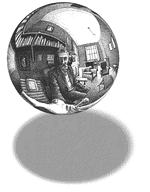Helicopters at Treblinka?

Dear AnswerMan,
Both the 1971 and the 1996 edition of Michael Elkins' book *Forged in Fury* include a passage that describes the aftermath of the Aug. 2, 1943 uprising at the Treblinka concentration camp in Poland. Both editions describe the hunt for the Treblinka escapees—its Jewish inmates—in these terms:
“For four days, the Germans prowled the forest, tracing the Jews with packs of hunting dogs, spotting them with helicopters, burning them out of the underbrush with flamethrowers, killing them on the spot, wherever they were found. Of the 180 Jews in the forest, only 18 survived…”
It's the reference to “helicopters” in the Elkins account that I find problematic. Were there in fact helicopters deployed by the Treblinka authorities to “spot” and track down the escapees or was Elkins—as so often happens—winking in the direction of Hollywood? Might not this have been a case of a typical *MASH* or Vietnam War scenario transposed to an earlier epoch for the sake of an added dramatic effect?
O. Slepokura

AnswerMan Replies:
The first prototype of a helicopter, or airplane using lift from horizontal rotors, was made by the Russian Igor Sikorsky in 1909. Sikorsky emigrated to the United States after the Revolution of 1917, developing the first helicopter in the US in 1939, and so the helicopter has tended to be associated above all with American air power.
But in fact Germany was not far behind. As early as 1926, Anton Flettner, founder of the Flettner Aircraft Corporation, was developing prototypes similar to modern helicopters. In 1940, the German navy requested a small helicopter that could be used for reconnaissance at sea, the ultimate product of this was the Flettner FL-282 “Kolibri” (Hummingbird), a very successful aircraft. But only about two dozen were built, and, like most helicopters, the Kolibri had a short flight range of about 100 miles. Therefore, while the Germans indeed had helicopters in World War Two, it is extremely unlikely that they were used for land reconnaissance much less for extended search and destroy operations. Schiffer Publications of Aglen, PA has two volumes devoted to German helicopters, Heinz Nowarra's “German Helicopters, 1928-1945”, and “The Luftwaffe Profile Series — Volume 6: Flettner FL 282”, both at a modest price.
While it is unlikely that a helicopter would have been available in Eastern Poland, the Germans did have a widely used scouting plane, the Fieseler Storch, which in at least one case was confused with a helicopter, although it didn't look anything like one.
In 1960, the West German authorities finally succeeded in interrogating August Becker, the author of a famous letter, introduced at the IMT as PS-501, which is crucial to the claim of gassing vans. Becker had apparently dropped out of sight since the war, since he had never been asked to corroborate his letter at Nuremberg or any other trials. In the course of his interrogation, he claimed that there was an extermination camp at Minsk (contradicting the standard version) and also that he flew to Minsk on a helicopter — but then he corrected himself and said it was a Fieseler Storch.
On the basis of this interrogation, the West German authorities decided that Becker was unfit to stand trial or imprisonment. (consult Klee, “The Good Old Days”, p. 68ff, 284, 289).
AnswerMan's educated guess is that Elkins was simply repeating what someone had told him about “German helicopters” which were probably confused with Fieseler Storch scouting planes. Of course, you may ask, is it really possible for someone to confuse a scouting plane with a helicopter? Well, it's hard to say, but such a confusion was evidently good enough to make August Becker incompetent to stand trial.
Bibliographic information about this document: n/a
Other contributors to this document: n/a
Editor’s comments: n/a
